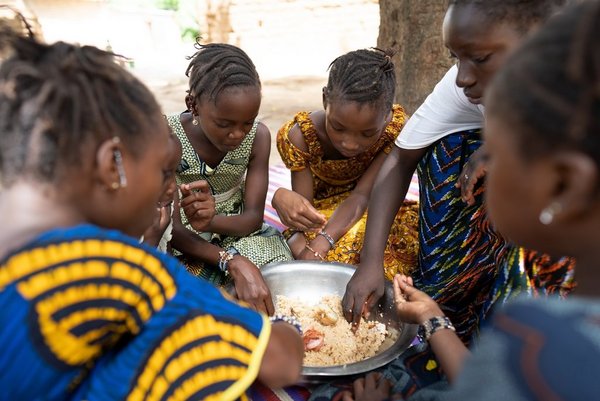 Read this article in French
Read this article in French- Share this article
- Subscribe to our newsletter
Worsening hunger in West and Central Africa
Worsening hunger grips West and Central Africa amid persistent conflict and economic turmoil, the World Food Programme (WFP) warns in April 2024.
Nearly 55 million people in West and Central Africa will struggle to feed themselves in the June-August 2024 lean season, according to the March 2024 Cadre Harmonisé food security analysis released by the Permanent Inter-State Committee for Drought Control in the Sahel (CILSS).
This figure represents a four-million increase in the number of people who are food-insecure compared to the November 2023 forecast and highlights a fourfold increase over the last five years. The situation is particularly worrying in conflict-affected northern Mali, where an estimated 2,600 people are likely to experience catastrophic hunger (IPC/CH phase 5). The latest data also reveals a significant shift in the factors driving food insecurity in the region, beyond recurring conflicts.
Economic challenges such as currency devaluations, soaring inflation, stagnating production and trade barriers have worsened the food crisis, affecting ordinary people across the region, with Nigeria, Ghana, Sierra Leone and Mali being among the most severely affected.
Prices of major staple grains continue to rise across the region from ten per cent to more than 100 per cent compared to the five-year average, driven by currency inflation, fuel and transport costs, ECOWAS sanctions, and restrictions on agropastoral product flows. Currency inflation is a major driver of price volatility in Ghana (23 %), Nigeria (30 %), Sierra Leone (54 %), Liberia (10 %) and The Gambia (16 %).
West and Central Africa remain heavily dependent on imports to meet the population's food needs. Still, import bills continue to rise due to currency depreciation and high inflation, even as countries struggle with major fiscal constraints and macroeconomic challenges.
Cereal production for the 2023-2024 agricultural season shows a deficit of 12 million tons, while the per capita availability of cereals is down by two per cent compared to the last agricultural season.
16.7 million children under five are acutely malnourished, and more than two out of three households are unable to afford healthy diets. In addition, eight out of ten children aged 6-23 months do not consume the minimum number of foods required for optimal growth and development.
High food prices, limited healthcare access and inadequate diets primarily drive acute malnutrition in children under five, adolescents and pregnant women. In parts of northern Nigeria, the prevalence of acute malnutrition in women aged 15-49 years is as high as 31 per cent.
(WFP/ile)
Read more on the WFP website





Add a comment
Be the First to Comment